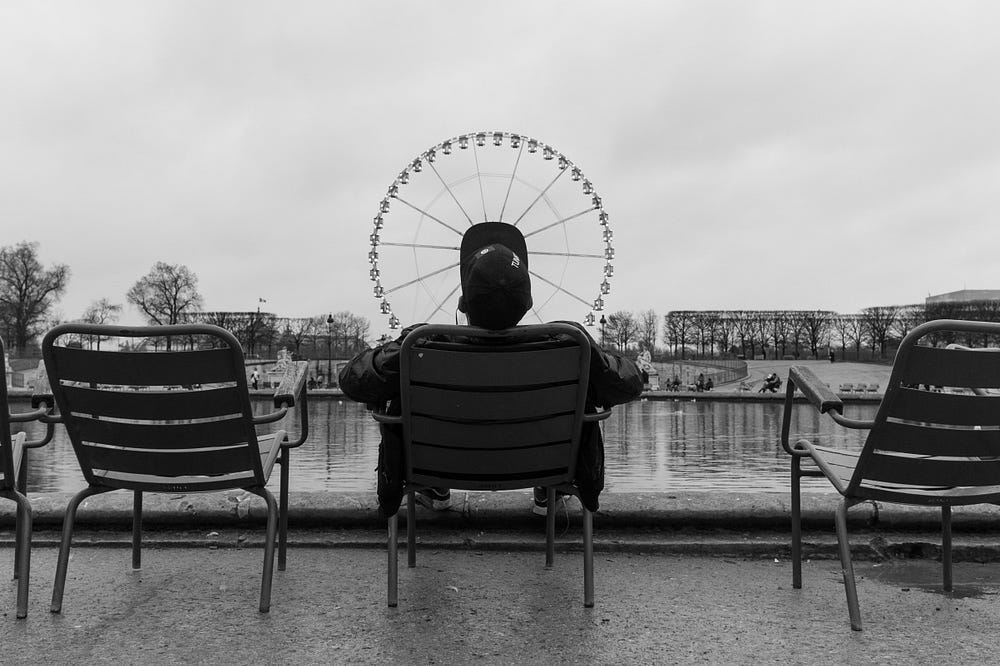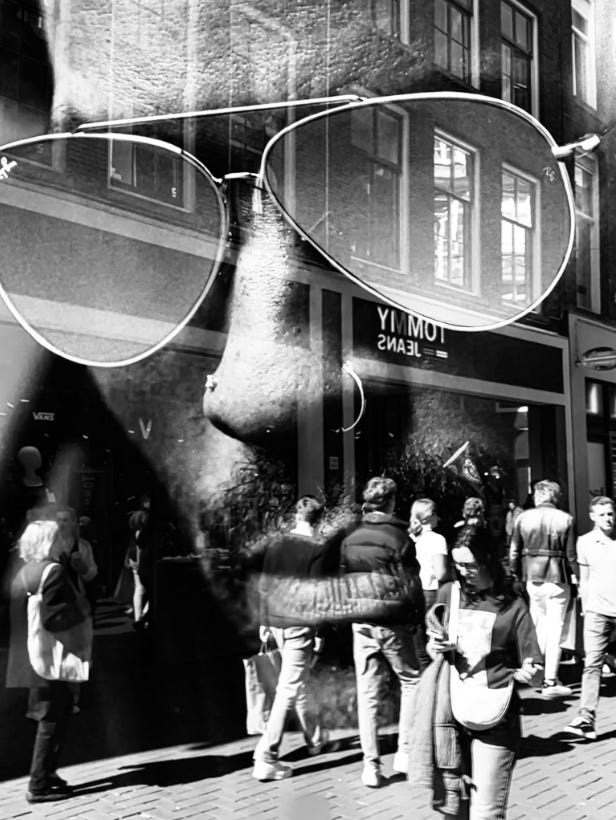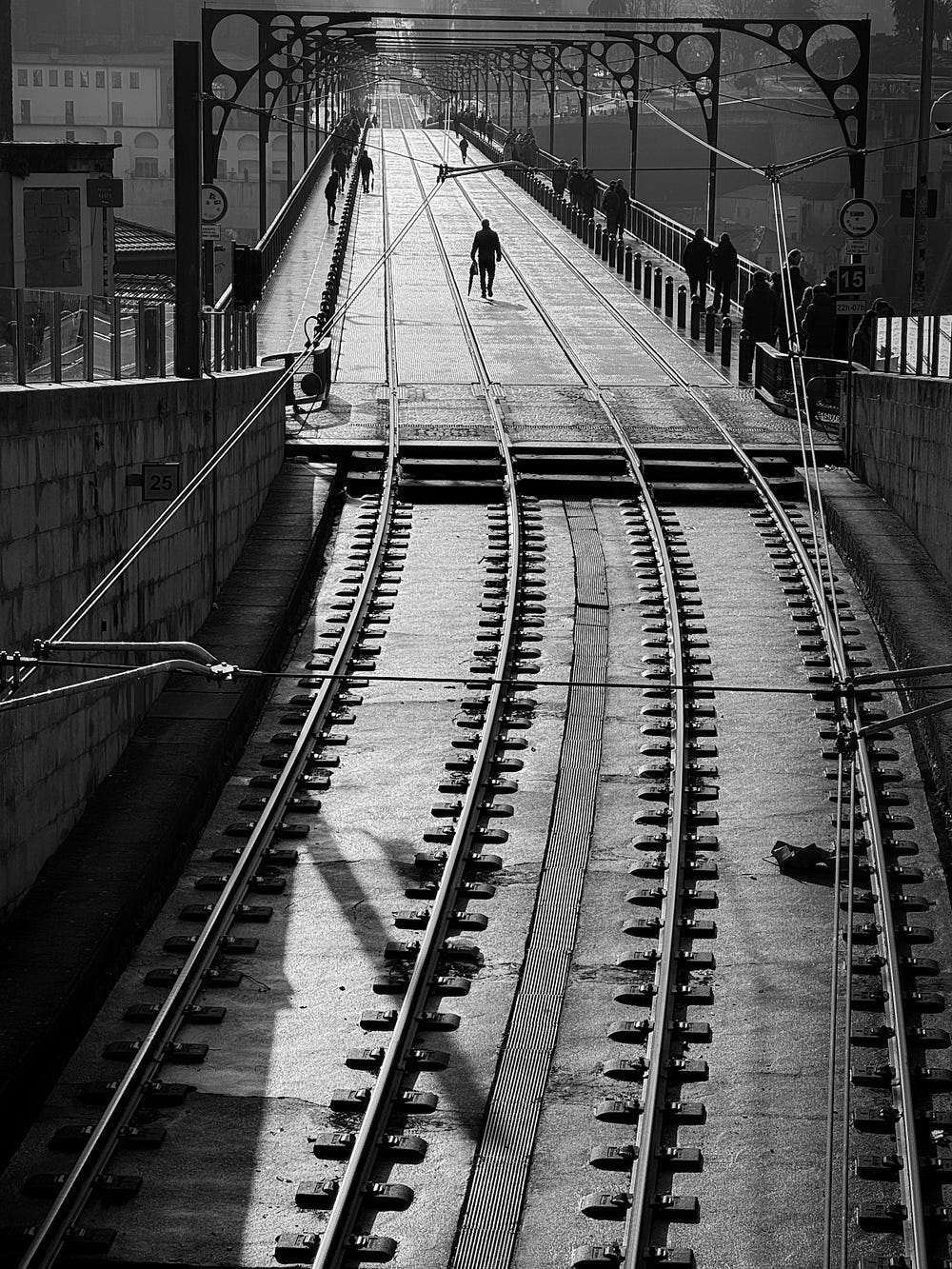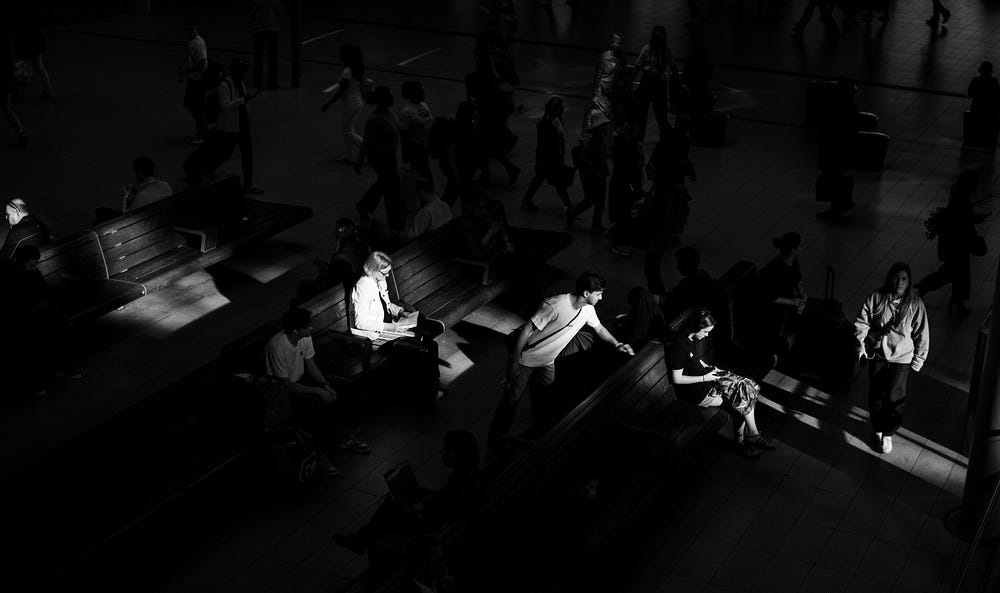When you think about Fine Art in Photography, you think the focus is on creativity, not on capturing reality.
Fine art photographs express an idea, emotion, or message unique to the artist. They aren’t necessarily about perfectly depicting a scene.
Fine art photography can be abstract, staged, manipulated, or use special effects, including heavy post-processing, to achieve the desired artistic outcome.
Staging, manipulation, post-processing?
Completely different from the candid nature of Street Photography. Right?
Well, it depends on how you approach it.
A virtual cameral dial
Street Photography is versatile. That is one of the reasons why I love it.
My Fujifilm X100 F has manual dials. I can adjust the shutter speed, exposure compensation, ISO, and other settings. Often, I also use a virtual dial to shift my street mood!
One day, you feel courageous. You get very close. You make in-your-face candid street portraits that transpire emotion and stories underneath. You don’t need to ask anyone to pose for you.
One day, you have the patience to shoot and shoot until you capture the moment, which makes your day after so many kilometers. You don’t need to ask someone to make that scene that makes your photograph work.
One day, you want to confuse your viewers and you don’t feel in the mood to shoot people directly. You glue yourself to shop windows and play with abstract reflections. You don’t need to do double exposures.
I can give you a couple of more examples of how you can adapt your time on the street to your own moods.
For now, let me say that some days, you just want to take a step back. You want to shoot but don’t want to be in the middle of the action.
You want to slow down and have enough time to think. Think about the place, the composition, the light, the shapes.
Think about how you can transform the mundane in front of everyone’s eyes into a creation that reflects your personal interpretation.
The street is your canvas.
The camera is your brush.
Isolation
When I am in a Fine Art mode, I often isolate people in my frame. They are the main point of focus.
It seems easy, but you must be careful not to get trapped in the clichés. The world is saturated with photos of someone walking down the street.
The isolation of the subject and how it falls in the frame against the surroundings is important.
Separating the subjects may emphasize the feeling of loneliness. It can also bring a feeling of being in but not belonging to a place.
You transcend mere aesthetics in a photograph by evoking those feelings in the viewer.
You can provoke both a positive and a negative emotion.
Feelings of loneliness and alienation, a sense of being lost and cut off from the rest of the world.
Or feelings of freedom in a city world that now (in the frame) seems less populated. Where one can have space to breathe.
Ultimately, viewers decide what they want. They use their own experiences to find something in the images.
Timing
Once you find a good spot, the first thing to consider is where the figure might appear.
The person is crucial to the composition. They are the focal point and also balance the other elements.
You need to frame it well. Look for shapes and patterns that will become the background of your character’s play.
You can plan. Imagine the composition. And keep experimenting till the right moment.
Eventually, you get an average result. Aesthetically strong but without substance.
Or, you can add to the composition a narrative that leaves the viewer with questions or, sometimes, with a sense of discomfort, as with the following example. It was taken at an entrance to a subway station in downtown Lisbon.
Light Torches
One of my favorite ways to isolate subjects is a strong ephemeral light, which cuts through the darkness.
The light reveals a figure or a set of figures. It detaches them from their surroundings before the shadows swallow them again.
You freeze a highlighted moment as a snapshot of reality emerging from a context that sits in the background. A dark background.
In the sequence of photographs below, I worked with a ray of light crossing the main hall of the Utrecht Central Station. The station is the busiest in the country.
While waiting for my connection, I usually have about 20 minutes to go fishing.
This day, I decided to explore the view from the upper balcony over the busy hall’s commercial area.
The light was perfect.
Days are becoming longer. In the later afternoon and on clear days, strips of sunlight stretch inside. They come in through the partially see-through ceiling and large windows.
A light beam lit a narrow part of the waiting benches. Several fellow waiting commuters were there.
I worked the scene for a couple of minutes. I tested different exposure compensations to dive the surroundings into deep blacks. Maintaining shapes but anonymizing the people around the ones under the light.
You see a raw sequence of three photos. I selected the third one to further post-process. It had its own merits for aesthetics and for the story. The story emerges as the light cracks through the darkness.
I also like the sequence itself. Sometimes, a few photos are better than one. They show what happens in between.
Although sequences are not very common in street photography, they can also be a wonderful way of storytelling.
Fine Art and Street Photography?
Traditionally, one could say that fine art photography and street photography haven't been seen as closely linked.
Fine art photography emphasizes careful execution and deep concepts. Street photography thrives on snatching one-time moments in an urban set-up.
The lack of connection is not necessarily true.
You can filter what you see and transform the mundane into a personal artistic statement.
Isolate your subjects to create a mood or feeling. Play with light to make them stand out from the background. And finally, hone your timing to capture the perfect moment that tells a story.
I will continue to explore the reasoning and the how-to behind the making of street photos.
I am looking forward to your reactions.
And if you are curious, subscribe to my upcoming stories and visit my portfolio 🙂.


















Excellent piece and very thought provoking. I recognise the idea that stepping back or considering the environment can make for a different type of image. But in my case I find that I do not consciously seek this out. Instead, these different scenarios are given to me as I wander the streets. For me, the key is being able to recognise the new scene that presents itself and find the pictures in it.
This is EXCELLENT! I love all of it, especially "When I am in a Fine Art mode, I often isolate people in my frame. They are the main point of focus." I felt that and all your other "modes", including when I'm not feeling like connecting directly and shooting reflections. Your images are well done!